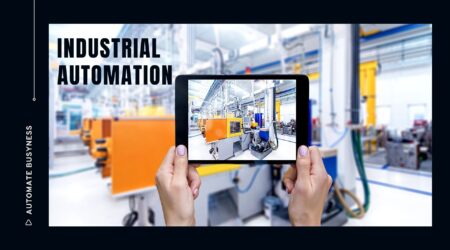Industrial automation describes computerised systems used in manufacturing that operate various machines and processes without the need for human intervention. The majority of the tasks carried out by such systems would be regarded as repetitive, mechanical, or occasionally both.
Depending on the labor market, labor costs, production and assembly needs, and competitive pressure, your business will need the best automation solution. Below are emphasized the many categories of automation system types and the industries where they are most frequently employed.
You should be better able to choose the ideal automation system for your company by looking at the sorts of systems listed below and taking the considerations discussed above into account.
Types of Industrial Automation

Fixed Automation
Fixed automation systems, often known as hard automation, consistently complete a specific set of duties. This kind of system would normally be employed for continuous flow systems and discrete mass manufacturing because of its function.
An automated conveyer belt system that moves objects from point A to point B with the least amount of effort is an example of fixed automation equipment.
Automated conveyer belts carry out fixed and repetitive tasks to reach high production quantities, much like any other fixed automation system equipment.
Compatible System :
Despite its limitations, repetitive production allows for some changes in the manufacturing process (e.g. in food packaging or the textile industry)
Adopting a fixed automation system, such as automated conveyer belts, and adding value-added solutions during their installation reduces the pressure of the competition on your company, boosts your profit margin, and puts you one step ahead of the pack.
Using bundled wire for automated conveyer systems would be an illustration of a value-added solution. In addition to reducing installation time and labour costs, this also protects workers from injuries caused by pulling wire during installation
Programmable Automation :
Programmable automation, as the name implies, operates using instructions provided by a computer programme. This indicates that the processes that are produced can vary significantly depending on the directions changed to the computer through a series of code.
However, because programming requires non-trivial work, little change is made to the activities and processes.
This kind of automation is typical in factories that manufacture large quantities of comparable goods using many of the same processes and equipment, such as paper mills and steel rolling mill.
This system would be compatible with the following manufacturing processes:
repetitive production, which involves making many of the same products over a long period of time.
Programmable automation technology may be expensive to set up initially, but because the operations are ongoing and rarely change, they are typically less expensive over time.
Flexible Automation
This kind of automation, also known as soft automation, enables more adaptability in production and is used in computer-controlled flexible manufacturing systems.
Every piece of machinery receives instructions from a computer that is managed by a person, therefore the tasks might change significantly depending on the code that is sent to the computer.
Typically, batch operations and job shops with a wide range of products and low to moderate task volumes, like those in the textile industry, would use this kind of automation.
This system would be compatible with the following manufacturing processes:
- discrete manufacturing, which allows for minor variations within the production process, such as in the textile or food packaging sectors.
- Job shop manufacturing, which takes place in designated production areas and requires more work than other types of manufacturing, A case in point is the creation of unique machinery.
- Raw materials are produced using a batch method, in which each step of the production line is completed after a batch has passed through it (e.g. in the pharmaceutical industry and in paint manufacturing).
- Production that uses a continuous process ensures consistency in processing because the entire manufacturing process remains constant. This kind of manufacturing is frequently employed in the production of food, drinks, and oil.
Integrated Automation
Integrated automation entails completely automating production facilities so that all operations are managed by computers and control systems with little to no human input.
The required parts can be designed by computers, tested by computers, and manufactured by computers. Like flexible automation, integrated automation is suitable with both batch and continuous manufacturing processes.
Automation Technologies :
- Process planning with computers
- computer-aided design and production
- machine tools with computer numerical control
- Control of production and scheduling using computers
- Systems for automatic archiving and retrieval
- machines that can be customised
- Robotic automated material handling systems
- Automated cranes and conveyor belts
Conclusion :
When considering the right system for your business, the degree of industrial automation required for any manufacturing facility should be determined by the labor conditions, competitive pressure, manufacturing and assembly specifications, work requirements and the cost of labor.
By taking these factors into consideration, you can ensure that your industrial software automation investment will be justified by a consistent profit increase.
ALSO READ
You may also like our other related articles on automation :





